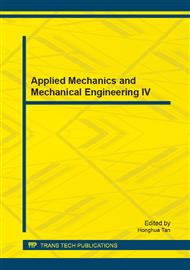p.267
p.271
p.278
p.283
p.289
p.297
p.304
p.310
p.319
Thermal Effects Analysis of Flip Chip LED Packages with through Silicon via (TSV) by Using Numerical Simulation
Abstract:
With advancement of technology, package sizes and products are becoming smaller due to miniaturization. Separate light-emitting diode (LED) chips and control integrated circuits with through silicon via (TSV) structurescan be combined to achieve reduced size. LED chipswithFlip Chip structureare capable of higher optical efficiency and heat dissipation. Analysis of LED chip structure after heat-related destruction of the chip indicated that the chip suffered stress from heating and cooling. The material used for TSV structures is copper, sincethis provides good electrical conductivity and high thermal conductivity. However, the thermal expansion coefficient of copper is higher than for other materials and can result in thermal expansion coefficient mismatch. Hence, the use of this material is likely to cause stress concentration and thus cause damage. In this study, molybdenum and tungsten were tested as replacements for copper in TSV, and the modified TSV was subjected to simulation analysis.The results indicate that replacement of TSV materials can reduce thermal expansion coefficient mismatch and consequent stress fracture and that the performance of different materials can be simulated by Fatigue Analysis and Load.
Info:
Periodical:
Pages:
289-294
Citation:
Online since:
October 2013
Authors:
Price:
Сopyright:
© 2014 Trans Tech Publications Ltd. All Rights Reserved
Share:
Citation:


